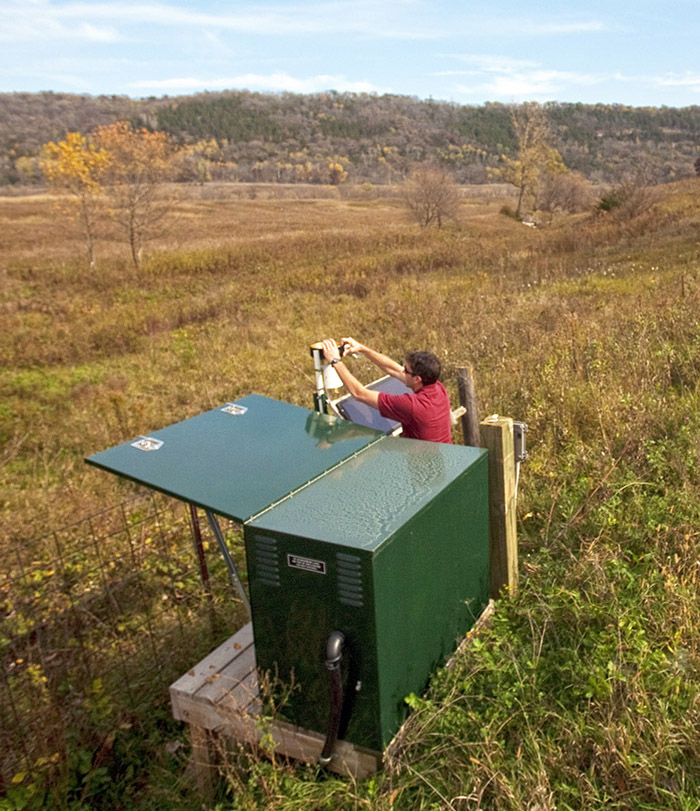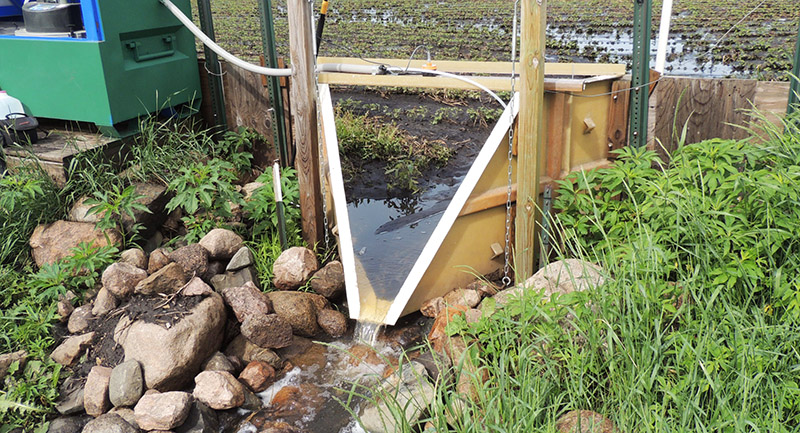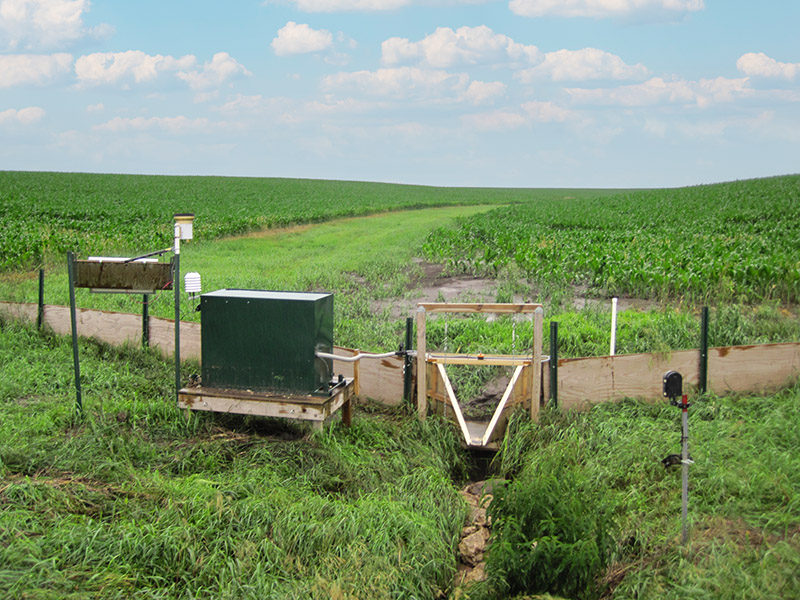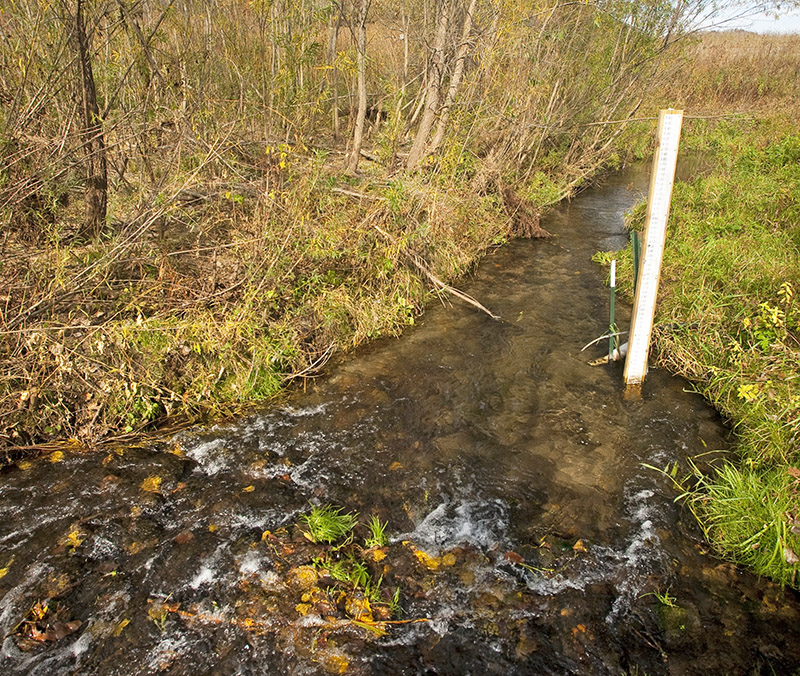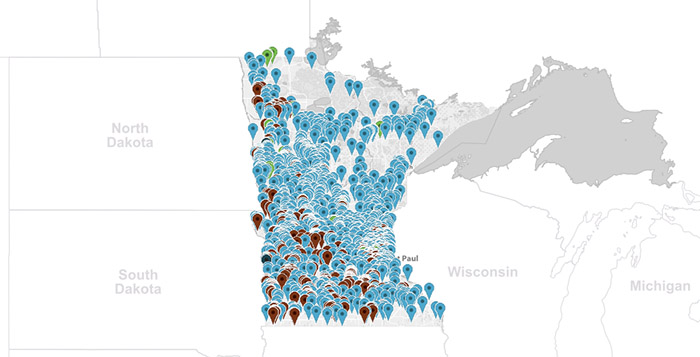We have strategically positioned ten monitoring stations in the project area:
Monitoring Stations
Real time monitoring data is available at all stations online, including rainfall, water levels, water temperature, turbidity (water clarity), nitrate levels, and soil moisture and temperature.
Edge-of-Field Monitoring
Edge-of-field sites play a pivotal role in assessing the movement of runoff, soil, and nutrients from specific fields to adjacent waterways. Notably, one station even gauges sub-surface tile drainage alongside surface water runoff. Each of these sites encompasses an area ranging from 17 to 95 acres, summing up to a total of five edge-of-field monitoring stations, positioned at the fringes of operational farms.
Automation lies at the heart of these installations, enabling the continuous collection of water samples whenever runoff is detected. This means 365/24/7! Rigorous analysis of these samples zeroes in on nitrogen, phosphorus, and sediment content. Additionally, the monitoring extends below the surface, tracking nitrate-nitrogen levels in water moving through the soil and groundwater.
Runoff is very episodic at these locations, with an average of 20-25 runoff generating events each year. These are often triggered by snowmelt runoff and rainfall runoff during periods of the year when the crop canopy is not well established.
In-Stream Monitoring
In-stream monitoring sites are located at the outlet of three small watersheds (South Branch of the Root River Headwaters, Crystal Creek and Bridge Creek). Each site captures water from an area of 2,800 – 4,700 acres. Each sub-watershed represents one of the three unique landscapes found in the greater Root River watershed. Those landscapes include the glacial till area in the west, central karst terrain and bluff landscape in the east. In-stream sites are equipped to continuously monitor flow, precipitation, nitrogen, phosphorus, sediment, and turbidity during ice-free periods.
Monitoring Wells
In collaboration with DNR’s Cooperative Groundwater Monitoring program, four long-term nested monitoring wells were installed. These sites will provide valuable information about groundwater quantity and quality.

